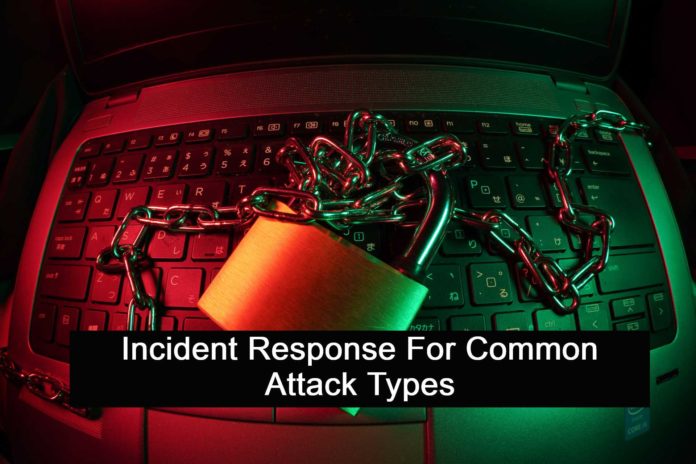1. Brute Forcing
Details:
Attacker trying to guess a password by attempting several different passwords
Threat Indicators:
Multiple login failures in a short period of time
Where To Investigate:
• Active directory logs
• Application logs
• Operational system logs
• Contact user
Possible Actions:
If not legit action, disable the account and investigate/block attacker
2. Botnets
Details:
Attackers are using the victim server to perform DDoS attacks or other malicious activities
Threat Indicators:
• Connection to suspicious IPs
• Abnormal high volume of network traffic
Where To Investigate:
• Network traffic
• OS logs (new processes)
• Contact server owner
• Contact support team
Possible Actions:
If confirmed:
• Isolate the server
• Remove malicious processes
• Patch the vulnerability utilized for infection
3. Ransomware
Details:
A type of malware that encrypts files and requests a ransom (money payment) from the user to decrypt the files
Threat Indicators:
• Anti-Virus alerts
• Connection to suspicious Ips
Where To Investigate:
• AV logs
• OS logs
• Account logs
• Network traffic
Possible Actions:
• Request AV checks
• Isolate the machine
4. Data Exfiltration
Details:
Attacker (or rogue employee) exfiltrate data to external sources
Threat Indicators:
• Abnormal high network traffic
• Connection to cloud -storage solutions (Dropbox, Google Cloud)
• Unusual USB Sticks
Where To Investigate:
• Network traffic
• Proxy logs
• OS logs
Possible Actions:
• If employee: Contact manager, perform full forensics
• If external threat: Isolate the machine, disconnect from network
5. Compromised Account
Details:
Attackers get access to one account (via social engineering or any other method)
Threat Indicators:
• Off-hours account logins
• Account group changes
• Abnormal high network traffic
Where To Investigate:
• Active directory logs
• OS logs
• Network traffic
• Contact user for clarifications
Possible Actions:
If confirmed:
• Disable account
• Password changes
• Forensic investigations
6. Denial Of Service (Dos/DDoS)
Details:
When attacker can cause interference in a system by exploiting DoS vulnerabilities or by generating a high volume of traffic
Threat Indicators:
Abnormal high network traffic in public facing servers
Where To Investigate:
• Network traffic
• Firewall logs
• OS logs
Possible Actions:
• If DoS due to vulnerabilities: Contact patching team for remediation
• If DDoS due to network traffic: Contact network Support or ISP
7. Advanced Persistent Treats (APTs)
Details:
Attackers get access to the system and create backdoors for further exploitation. Usually hard to
detect
Threat Indicators:
• Connection to suspicious IPs
• Abnormal high volume of network traffic
• Off-hours access logs
• New admin account creations
Where To Investigate:
• Network traffic
• Access logs
• OS logs (new processes, new connections, abnormal users)
• Contact server owner/support teams
Possible Actions:
If confirmed:
• Isolate the machine
• Start formal forensics process
• Start escalation/communication plan



































